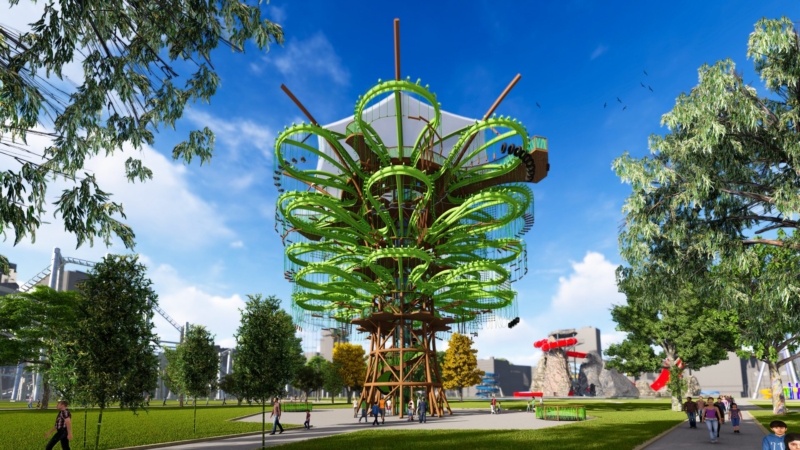The Tree Course product manager K. Karamfilov shares more on the innovative attraction

Konstantin Karamfilov joined Walltopia in 2018 as Architect and Product Manager of Active entertainment products. Prior to Walltopia, Konstantin has been working for The Walt Disney Company in Paris, France, and ARCAS Architecture and Urbanism Paris headed by Maurice Culot, one of the students of Frank Lloyd Wright and Paolo Soleri. He is a graduate from the ECOLE NATIONAL SUPERIEURE D’ARCHITECTURE Paris-Belleville and is a member of the French Architects Association (Ordre des architects). Two of his favorite architects are Santiago Calatrava and Ludwig Mies Van der Rohe.
Walltopia: What has been your most rewarding project since you joined Walltopia and why?
Konstantin: The Tree Course for sure. It was also the first big project I was given, almost immediately after I joined the company. It was a big challenge as back then I wasn’t very familiar with the rope courses as a product. At the same time, I had to create something that doesn’t exist and to look at this from functionality and design. Except that I am proud of the end result, its complexity allowed me to explore and solve problems that I haven’t met before.
WT: What was The Tree course‘s starting point for you and the one thing you did not want to make any compromise with?
K: My starting point was to abandon the “form follows function” approach and think of a new nature-inspired architectural design that can become an anchor attraction for amusement parks. The goal was to create a Structural Sculpture with a small footprint that will combine the functionalities of the classical ropes course with a visually striking and appealing design. So I can say the most important thing for me and the main driver of the project, was the visual aspect and I didn’t want to make any compromise with. The design of the course brought lots of challenges to the engineers but I am happy that we found a way to overcome those.
WT: To us, the Tree Course combines two categories in itself – the traditional ropes course and the new active entertainment trend. What’s the difference between them?
K: That is true. The classical ropes course as I already mentioned is more oriented to a “form follows function” approach. They are high, industrial structures that are made to be functional and the designs are not that important (that’s why they look very similar, no matter who has manufactured them). On the other hand, we see the new active entertainment trend that is trying to enhance further the classical experience of the visitors with the introduction of innovative design, storytelling and theming. Those elements help visitors develop an emotional connection with the places or attractions they visit. In the Tree Course project, it was the nature that inspired us. If you think about it, trees are very similar to obstacle courses – you have to climb the trunk, then reach the branches that have different forms, you have to choose the right spot on every step to reach the top where you can have a great view and see everything around. So we tried to combine those two experiences with the idea that when people visit the Tree Course it feels like they are coming to climb an enormous tree with a variety of obstacles with different levels of difficulty. And when you reach the top of the tree a big platform awaits for you where you can have a break, take a photo, enjoy the view or even take a flight back to the ground. By the way, the platform organization was inspired by structures that many kids build with their parents on the trees in their backyards.
WT: What is the one thing you like most in the Walltopia Architecture & Design department?
K: Definitely the dynamic environment. I work on many projects and with many clients in a constant search for new ways to combine or reinvent our products to better respond to their needs. That makes every day different and gives me a feeling of constant learning and exploration.
WT: Any exciting new products you are working on at the moment?
K: The Rollglider Hub, definitely. It will help us expand our “tree forest catalog.” I have just started working on this one but I’m super excited about it as it will be the most complex attraction that we have ever done. So stay tuned!
